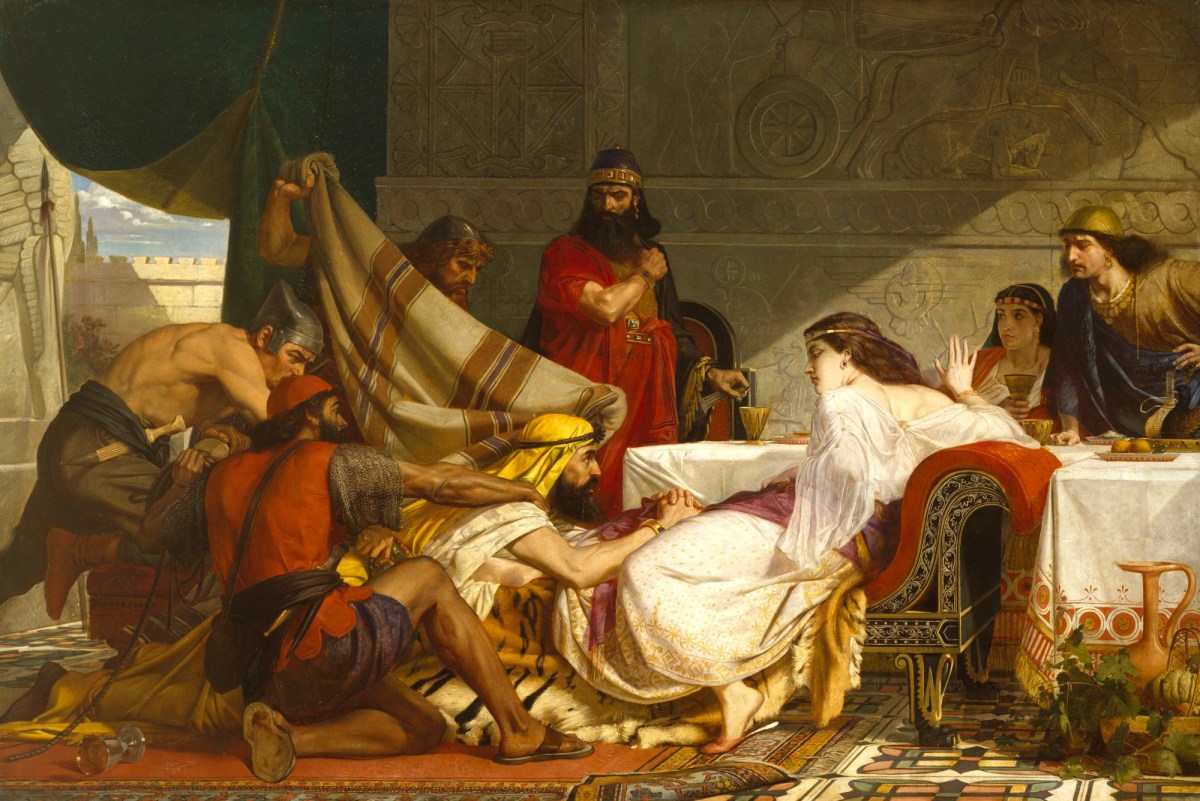
Edward Armitage RA, The Festival of Esther, 1865.
Oil on canvas. 1200 mm x 1830 mm. © Photo: Royal Academy of Arts, London.
This image is not available to download. To licence this image for commercial purposes, contact our Picture Library at picturelibrary@royalacademy.org.uk
The Festival of Esther, 1865
Edward Armitage RA (1817 - 1896)
RA Collection: Art
Esther, wife of the Persian King Ahasuerus, concealed the fact that she was Jewish from her husband. The king's chief minister, Haman hated Esther's adoptive father, Mordecai. In order to kill him he convinced Ahasuerus to issue a decree of execution against the Jews. On discovering this Esther held a banquet where she revealed that she was Jewish and pleaded for her people.
The King briefly left the banquet and returned to find Haman kneeling before the queen. Believing that he was attempting to seduce Esther, Ahasuerus had Haman executed. The Jews established a new annual festival on the 14th day of the month of Adar (February/March) known as 'Purim' or 'The Festival of Esther'.
In his painting Edward Armitage, R.A. shows the angry King ordering Haman to his death. Haman begs Esther for mercy, as guards cover his head and drag him from the royal table. Mordecai stands behind the table looking down upon the treacherous Haman. The queen's pale skin and white costume denote her regal status and her innocence. Although the scene is a dramatic one, the tension is measured in keeping with Armitage's classical principles. Understated details such as Haman's overturned goblet and the carpet's flipped up corner serve to signal unrest.
Object details
1200 mm x 1830 mm
Associated works of art
1 results
Start exploring the RA Collection
- Explore art works, paint-smeared palettes, scribbled letters and more...
- Artists and architects have run the RA for 250 years.
Our Collection is a record of them.




